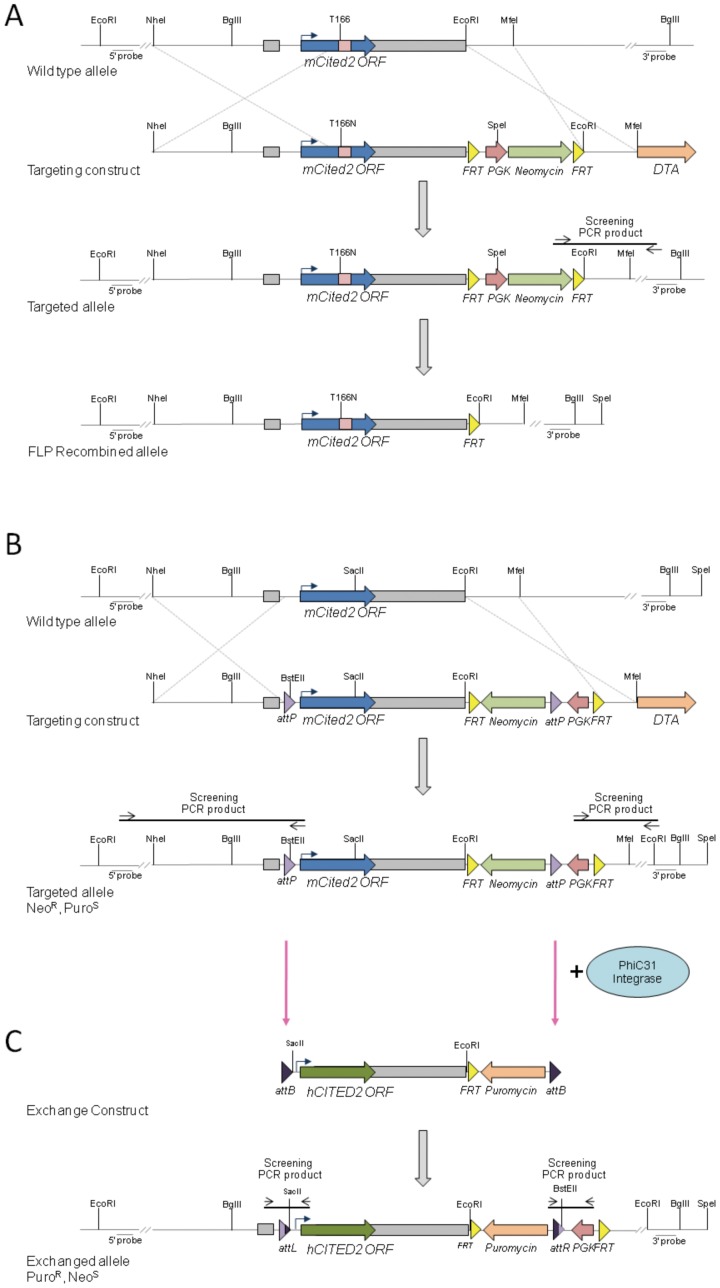Figure 6. Generation of Cited2 alleles.
(A) Targeting strategy for the generation of Cited2 T166N allele by homologous recombination. The T to N change was introduced by site directed mutagenesis into the orthologous residue in the mouse sequence. The structure of the wildtype Cited2 allele, targeting vector, targeted allele, and its structure after FLP mediated recombination are shown. The open reading frame (ORF, blue arrow) is entirely contained within exon 2 (exons indicated by grey rectangles). The targeting vector has an frt-PGK-NeoR-frt selection cassette downstream of exon 2, followed by a DTA (diphtheria toxin) cassette. (B) Targeting strategy for the generation of the Cited2attP ES cell line. A 5′ attP site was introduced into the first intron, upstream of the ATG and a 3′ attP site downstream of the stop codon and exon 2 as part of the neomycin selection cassette, in between the PGK promoter and the neomycin coding region. A DTA cassette was also introduced downstream of the 3′ homology arm for negative selection. (C) The human CITED2MRG1 isoform (not shown) and the human full length CITED2 were targeted into the Cited2 locus via PhiC31 integrase mediated cassette exchange. The exchange event occurs between the attP and attB sites giving rise to attL and attR sites. Successful exchange replaces the mouse Cited2 ORF with that of either the MRG1 isoform of CITED2 or the full length human CITED2 and brings the puromycin resistance gene under control of the PGK promoter.

